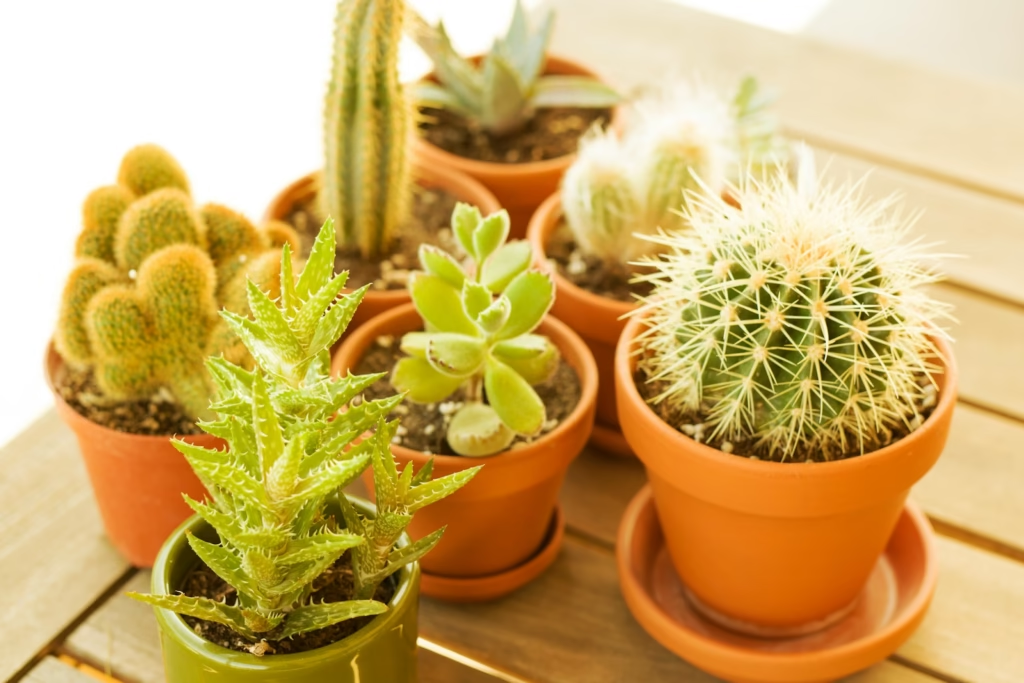Introduction
Cacti are fascinating plants known for their unique shapes, spiny textures, and resilience. These low-maintenance succulents thrive in arid conditions and make excellent additions to any indoor space. Whether you’re a seasoned gardener or just starting, this guide will equip you with the knowledge to successfully grow and care for your own collection of prickly pals.

Choosing the Right Cactus
The world of cacti is vast and diverse. Some popular choices for indoor cultivation include:
- Echinopsis: Known for their large, showy blooms.
- Mammillaria: Form clusters of small, globular cacti with colorful spines.
- Rebutia: miniature cacti that produce vibrant flowers.
- Gymnocalycium: Easy to care for with interesting patterns and colors.
- Opuntia: flattened, paddle-shaped cacti with distinctive spines.
Caring for Your Indoor Cactus
- Light: Most cacti require plenty of bright, indirect sunlight. A south-facing window is ideal.
- Watering: Cacti are drought-tolerant. Water thoroughly when the soil is completely dry to the touch, then allow it to drain completely. Overwatering is a common cause of root rot.
- Soil: Use a well-draining cactus and succulent mix. Avoid using regular potting soil as it retains too much moisture.
- Potting: Choose a pot with drainage holes to prevent waterlogging. Repot your cactus every 1-2 years in spring or summer.
Pruning Your Cactus
Pruning is generally not necessary for most cacti. However, you may want to remove dead or damaged parts to maintain the plant’s health and appearance.
Propagating Your Cactus
- Cuttings: Cut off a healthy section of a cactus and allow the cut end to callus over for a few days. Plant the cutting in well-draining soil and keep it slightly moist.
- Offsets: Gently remove offsets (small pups) that grow at the base of the mother plant. Plant them in their own pots.
- Seeds: Sow cactus seeds in a well-draining seed-starting mix. Keep the soil consistently moist and warm.
Growing Cactus from Seed
Growing cacti from seed can be a rewarding experience. However, it requires patience as it can take several years for seedlings to reach maturity.
Overwintering Your Cactus
Cacti require less water during the winter months. Reduce the watering frequency and provide them with a slightly cooler temperature.
Pests and Diseases
- Common Pests: Mealybugs, scale insects, and spider mites can infest cacti. Treat infestations with insecticidal soap or Neem oil.
- Common Diseases: Root rot is the most common disease, caused by overwatering.
Cactus Blooms
Many cacti produce stunning flowers, often in vibrant colors. To encourage blooming, provide plenty of sunlight and a period of cooler temperatures during the winter.
Common Issues
- Overwatering: The most common problem, leading to root rot.
- Underwatering: Can cause the cactus to shrivel and become dehydrated.
- Sunburn: Too much direct sunlight can scorch the cactus.
FAQs
- How often should I water my cactus? Water deeply and infrequently, allowing the soil to dry out completely between waterings.
- Why is my cactus turning brown? Brown spots can indicate sunburn, while a soft, mushy appearance may be a sign of root rot.
- Can I fertilize my cactus? Use a balanced, diluted cactus and succulent fertilizer during the growing season.
Conclusion
Growing cacti can be a rewarding and low-maintenance hobby. By following these simple tips and providing the right care, you can enjoy the beauty and resilience of these fascinating plants for years to come.
Disclaimer: This information is for general guidance only. Always research specific cactus care requirements based on the particular species.



